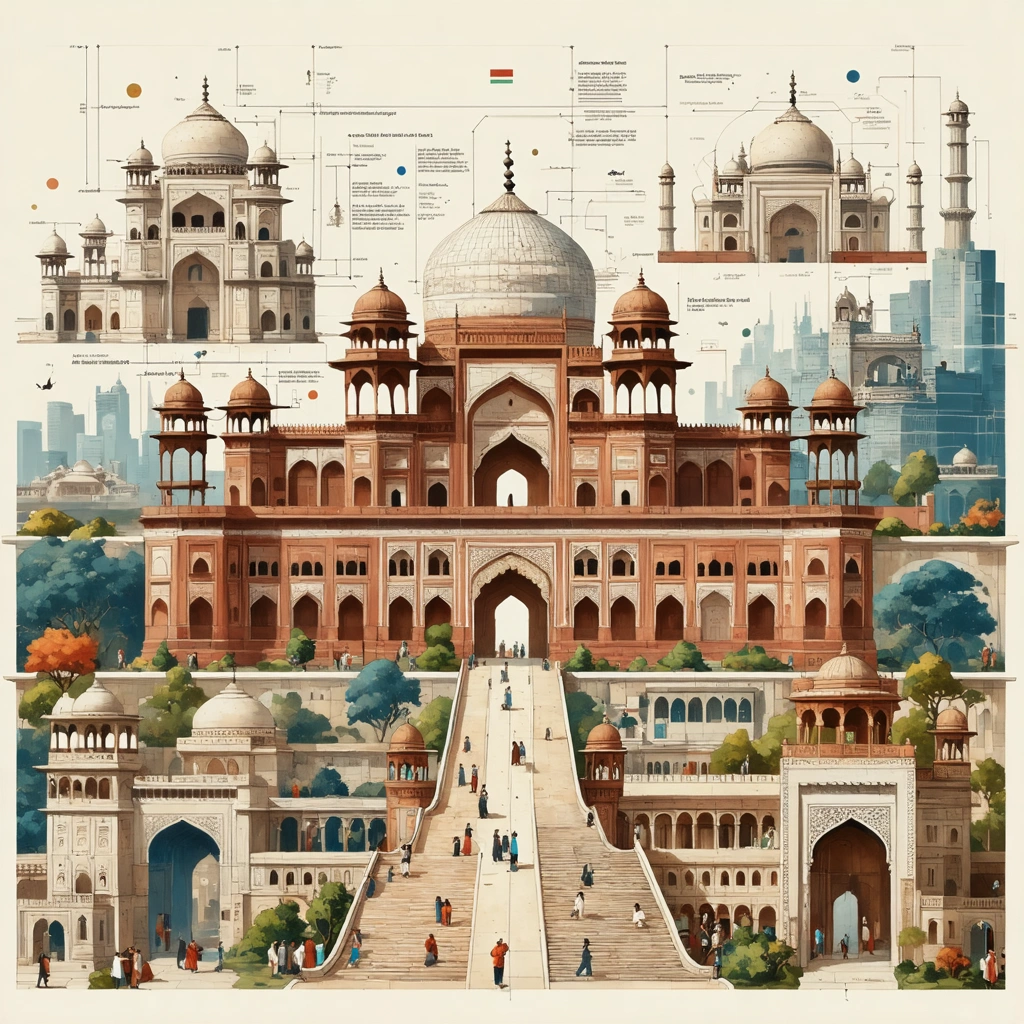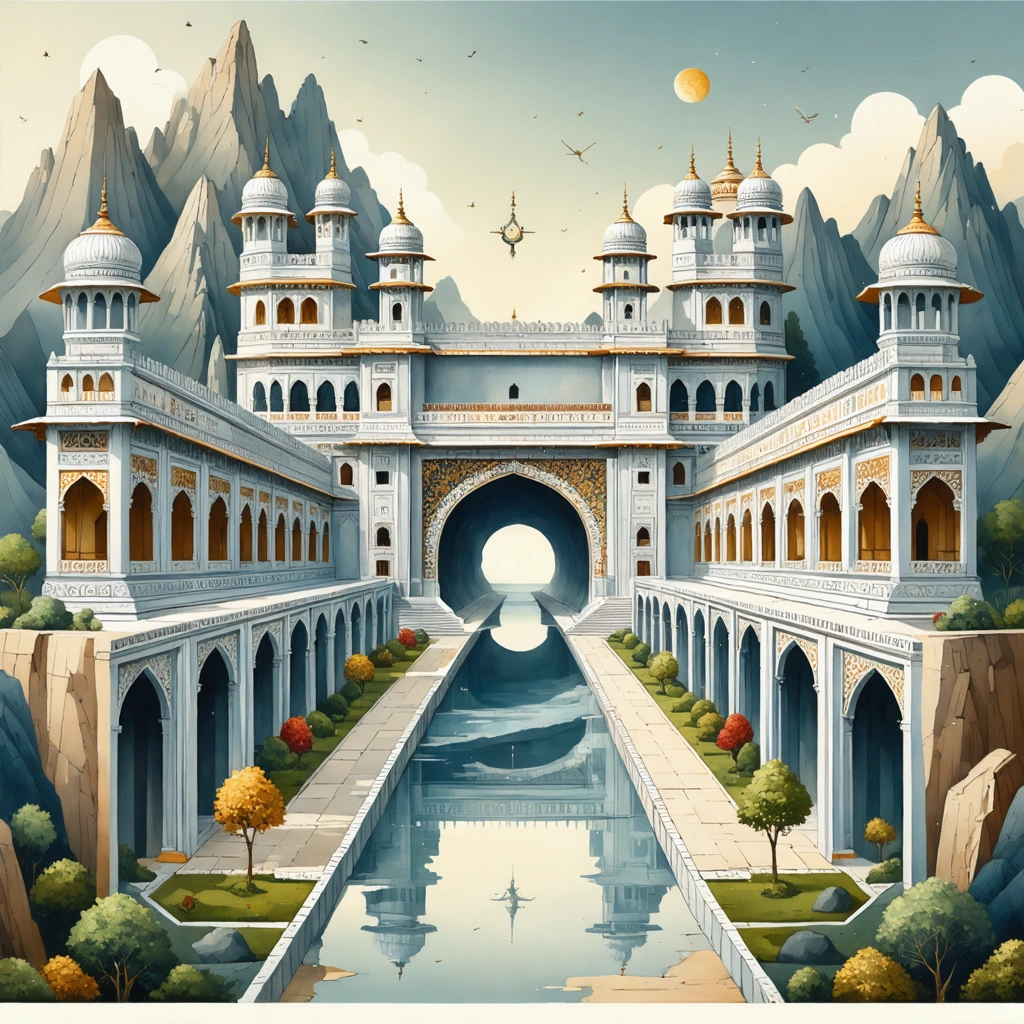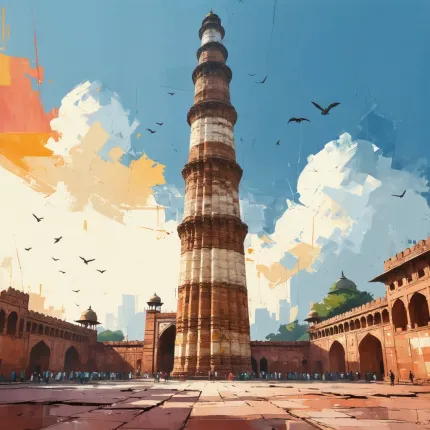
Unveiling India's Timeless Wonders: Why Our Architectural Heritage Deserves More Than a Passing Glance
Imagine stepping into a world where every stone tells a tale, every arch whispers secrets of empires long gone, and every intricate carving captures centuries of culture and artistry. This is the world of India’s architectural heritage—a living canvas that showcases the nation's diverse history through its breathtaking monuments and structures. Yet, in the whirlwind of modern life and rapid urbanization, these marvels often fade into the background, overshadowed by the race toward the future. Why does it matter? Because architecture is not just about bricks and mortar; it’s about identity, memory, and the stories that define us.
Take, for example, the magnificent Thirumalai Nayakar Mahal in Madurai. This 17th-century palace is a stunning fusion of Dravidian and Islamic styles, with soaring pillars and expansive courtyards that once echoed with royal processions. Despite its grandeur, many visitors treat it as just another tourist spot rather than a gateway into the Nayak dynasty’s rich history. Or consider the lesser-known but equally compelling Humayun Ka Maqbara, often overshadowed by its more famous cousin, the Taj Mahal. This mausoleum in Aurangabad, built in the late 17th century, stands as a testament to Mughal architectural brilliance adapted to the Deccan landscape—an architectural narrative waiting to be rediscovered.
And then there’s the Chenani Nashri Tunnel, a modern marvel nestled in the Himalayas, blending the cutting-edge with tradition. While not ancient, this tunnel represents how India’s architectural story continues—bridging difficult terrains and connecting remote regions, much like the ancient roads and bridges once did for kingdoms and empires. This continuity of innovation and heritage encapsulates the dynamic spirit of Indian architecture.
Why India's Architectural Legacy Faces Challenges Today
However, the story isn’t always as glorious as these monuments suggest. The challenge lies in preservation, awareness, and accessibility. Many of these sites suffer from neglect, environmental wear, or even encroachment. Urban sprawl consumes the surroundings, and without proper conservation, the intricate artistry carved into centuries-old stones risks being lost forever. Moreover, a lack of widespread knowledge means that millions miss the chance to appreciate these structures beyond their aesthetic appeal.
Ask yourself: when was the last time you truly explored the stories behind India’s architectural gems? Or considered how these places connect us to a timeline stretching back thousands of years? The disconnect is palpable, and it’s a loss not just for historians or architects but for anyone curious about the soul of India.
- Historical neglect: Many heritage sites receive insufficient funding or expertise for restoration.
- Urban pressures: Encroachment and pollution threaten the structural integrity of ancient monuments.
- Tourism gaps: Lack of engaging narratives and infrastructure limits visitor engagement and education.
Rediscovering and Reimagining Indian Architecture in 2025
But here’s the exciting part: 2025 marks a turning point. Across India, efforts are underway to breathe new life into these architectural treasures. Through innovative conservation techniques, digital storytelling, and increased community involvement, the past is being woven back into the fabric of modern identity. Imagine walking through the halls of Thirumalai Nayakar Mahal, augmented by interactive guides that reveal the palace’s secrets; or exploring Humayun Ka Maqbara with virtual reconstructions that bring its original glory to your eyes. Meanwhile, infrastructure projects like the Chenani Nashri Tunnel showcase how India’s architectural ingenuity continues to evolve, marrying heritage with modern needs.
This article will take you on a journey through some of India's most iconic and yet sometimes overlooked architectural wonders. We will dive deep into their historical context, marvel at their design and construction, and examine the challenges and triumphs of preserving them for future generations. Whether you’re a history buff, a traveler planning your next destination, or simply a curious reader, there’s a story here that will enrich your understanding of India’s unique architectural legacy.
What to Expect in the Following Sections
- The stories behind the stones: A closer look at monuments like Thirumalai Nayakar Mahal and Humayun Ka Maqbara—how they were built, what they signify, and why they matter today.
- Modern marvels and ancient inspiration: Exploring how contemporary feats like the Chenani Nashri Tunnel continue India’s architectural tradition in new and exciting ways.
- Preservation in practice: Insight into the challenges faced by conservationists and the innovative solutions being implemented to protect these treasures.
- Experiencing heritage first-hand: Tips and ideas on how you can engage with India’s architectural heritage meaningfully, whether through travel, virtual tours, or community involvement.
So, buckle up for a fascinating exploration of India’s architectural heritage—a journey that bridges centuries, blends styles, and connects past to present. By the end, you might just see those ancient stones and modern tunnels not only as structures but as vibrant chapters in the ongoing story of India.

Architectural Heritage of India: Explore India’s Architectural Marvels Reflecting Its History in 2025
What defines the architectural heritage of India and why is it significant in 2025?
India’s architectural heritage is a rich tapestry woven from diverse cultural, religious, and historical influences spanning thousands of years. It includes ancient temples, grand forts, majestic palaces, Mughal tombs, colonial structures, and modern engineering marvels. In 2025, this heritage is significant not only as a testament to India’s historical evolution but also as a source of national pride, tourism, and educational value.
The significance lies in how these structures encapsulate the stories of dynasties, artisans, and the socio-political contexts of their times. Understanding this heritage helps preserve identity, inspire contemporary architecture, and promote sustainable tourism that respects and revitalizes historic sites.
Which are some iconic architectural marvels representing India’s history?
India’s architectural marvels span different eras and styles, each reflecting distinct historical narratives. Some iconic examples include:
- Thirumalai Nayakar Mahal: Located in Madurai, Tamil Nadu, this 17th-century palace is a brilliant example of Indo-Saracenic architecture, blending Dravidian and Islamic styles. It was built by King Thirumalai Nayak of the Nayaka dynasty and showcases intricate stucco work, massive pillars, and spacious corridors. The palace reflects the grandeur of South Indian kingdoms during the post-Vijayanagara period.
- Humayun Ka Maqbara: Situated in Aurangabad, Maharashtra, this mausoleum is often described as the "Taj of the Deccan." It was built in the late 16th century for Humayun, the second Mughal emperor, and is a prime example of Mughal architecture outside Delhi. The monument's fusion of Persian and Indian architectural elements signifies the spread of Mughal culture in the Deccan region.
- Chenani Nashri Tunnel: Located in Jammu and Kashmir, this modern engineering feat is the longest road tunnel in India as of 2025. Opened in 2017, it exemplifies how India’s architectural and infrastructural heritage is evolving with cutting-edge technology. The tunnel reduces travel time, enhances connectivity, and symbolizes advancements in civil engineering in challenging terrains.
How do these architectural sites reflect India's historical and cultural diversity?
Each architectural site embodies the cultural, religious, and political milieu of its time. The Thirumalai Nayakar Mahal reflects the artistic sensibilities and political power of the Nayaka rulers who thrived after the decline of the Vijayanagara Empire, highlighting regional Dravidian traditions infused with Islamic influences.
Humayun Ka Maqbara captures the Mughal ethos of grandeur, symmetry, and garden-tomb design, illustrating the empire's expansion and the cultural assimilation between Persian and Indian styles. It also serves as a precursor to later Mughal monuments, including the Taj Mahal.
The Chenani Nashri Tunnel, while a modern structure, reflects ongoing efforts to overcome geographical challenges and unify disparate regions, showcasing India’s commitment to infrastructural development within its historical landscape.
What role does preservation and tourism play in sustaining India’s architectural heritage?
Preservation of architectural heritage ensures that these structures survive for future generations to study and appreciate. Sustainable tourism promotes awareness and generates revenue, which can be reinvested in conservation efforts.
- Preservation Challenges: Weathering, urbanization, and inadequate maintenance threaten many heritage sites.
- Role of Government and NGOs: Initiatives like the Archaeological Survey of India (ASI) and UNESCO World Heritage listings help protect significant monuments.
- Tourism Benefits: Sites like Thirumalai Nayakar Mahal attract cultural tourists, while engineering marvels like the Chenani Nashri Tunnel draw interest from enthusiasts of modern infrastructure.
- Community Involvement: Engaging local communities in conservation fosters a sense of ownership and sustainable stewardship.
How can one plan a comprehensive exploration of India’s architectural heritage in 2025?
Exploring India’s architectural heritage in 2025 requires thoughtful planning to cover a spectrum of historic and modern sites. Consider the following approach:
- Regional Focus: Identify key regions with rich heritage — South India for palaces like Thirumalai Nayakar Mahal, North India for Mughal monuments such as Humayun Ka Maqbara, and the Himalayan foothills for modern structures like the Chenani Nashri Tunnel.
- Guided Tours and Research: Engage local historians or certified guides to gain in-depth insights into architectural styles and historical contexts.
- Seasonal Timing: Plan visits during favorable weather seasons to fully experience outdoor sites and tunnel explorations.
- Combine Heritage with Technology: Use augmented reality apps and virtual tours that many heritage sites now offer to enrich the experience.
What future trends are shaping the understanding and conservation of India’s architectural heritage?
In 2025, the trend is toward integrating technology with heritage conservation and exploration. This includes 3D scanning, digital archiving, and virtual reality experiences that offer immersive learning without physical wear on fragile monuments.
Another trend is the emphasis on sustainable tourism and eco-friendly restoration practices, ensuring that heritage sites do not suffer ecological damage. Policies are increasingly focused on involving local communities and leveraging public-private partnerships for funding and management.
Finally, the recognition of lesser-known sites, such as regional forts, tunnels like Chenani Nashri, and palaces like Thirumalai Nayakar Mahal, is expanding the narrative beyond the most famous landmarks, providing a more inclusive understanding of India’s architectural legacy.

